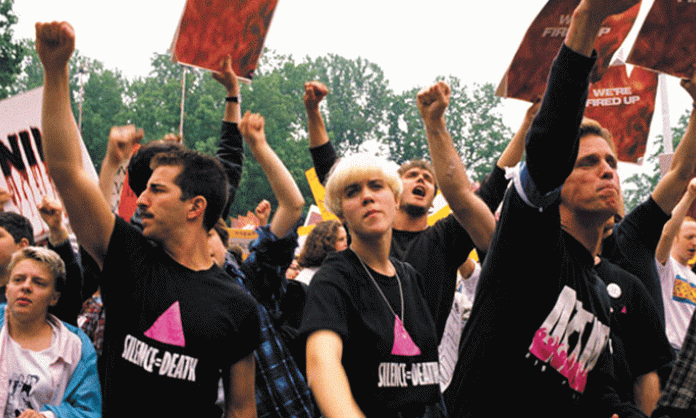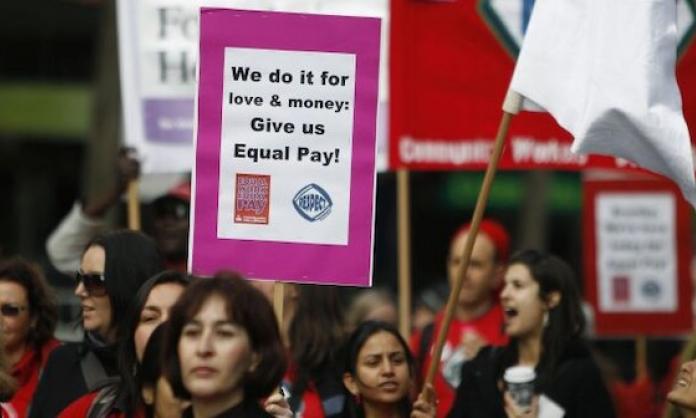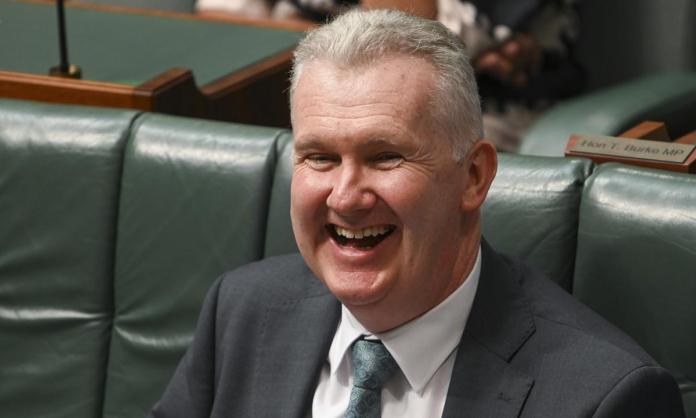More than 30 years after the first diagnosis of AIDS, sufferers are still fighting against stigma and for decent health services. This Red Flag special report looks at the history of AIDS activism, corporate profiteering from the virus suffering and current attacks on health services.
Coming out and acting up, by Roz Ward
ACT UP (Aids Coalition to Unleash Power) hit Australian shores in the early 1990s, unleashing a wave of radical GLBT activism in the spirit of the 1969 Stonewall riot in New York. At the time, activists were faced with conservative health services, confident homophobes and governments that wanted to ignore HIV.
Peter Stanley was a founding member of ACT UP in Sydney. He spoke to Red Flag about his involvement in the early struggles around HIV/AIDS in the 1990s.
Peter’s political life started at Monash University, where he first joined the anarchist collective before meeting and later joining Socialist Action: “After getting up at 4am to go to a picket to support the Builders Labourers Federation, I knew it was time to commit to socialist politics.”
Coming out in the 1980s – a time when awareness was growing about the extent of the HIV crisis – he was moved to become more active around gay liberation.
Peter moved from Melbourne to Sydney in 1990. While life was full of excitement, he said he was “fearful of stepping outside of the gay ghetto of inner Sydney”. He remembers that the Star Observer was then “full of obituaries of gay men who had died from AIDS-related illnesses”. Friends found it hard to get the treatment they needed, and drugs were expensive and, for many, unaffordable. Finding himself at the centre of an unfolding crisis, Peter was frustrated by the approach of many of the gay organisations: “The newly formed AIDS councils were pretty conservative organisations who didn’t want to rock the boat.”
When stories from New York reached Australia that a gay rights group called ACT UP had burst onto the scene taking militant action, Peter immediately thought “We need more of that here!”.
He says, “ACT UP had an in your face attitude, the whole silence = death message was very powerful.” Around 30 people who heard about it felt the same way and turned up at the first meeting of ACT UP in Sydney in early 1990. Not everyone agreed about strategy: “Some people had an attitude that we shouldn’t be too confrontational and we shouldn’t get arrested. Like when Fred Nile tried to march down Oxford Street to ‘cleanse it of gays’ … a lot of people wanted to let him march. I thought we should have confronted him head on.”
“Some people in ACT UP seemed like they wanted to stage-manage everything just for the media, but I thought we should encourage more people to get involved”, he explained.
The ACT UP action that received most attention was a protest outside the US consulate in Sydney. It coincided with the opening of an international AIDS conference in San Francisco.
The US government’s discriminatory policy meant that a visa would not be granted to any HIV-positive person who wanted to attend the conference. In San Francisco, outside the conference, ACT UP (US) organised large demonstrations that were broken up by riot police.
In Sydney, Peter remembers, “Protesters surrounded the entrance to the consulate, which had big glass doors and windows. We had organised to write messages on the glass with lipstick. Some of us thought we would try to get inside, and as we were banging on the doors, they swung open, so we went in! The police came to drag us out, and as I was trying to pull someone back from their grip, I was arrested. In total, eight of us were arrested that day.”
The protest got media coverage, drawing attention to the US policy. Peter remembers feeling “vindicated that direct action got the issues raised”.
Today, Peter says, “Although things have improved a lot, there are still issues with access to affordable drugs, and that stigma is still there around AIDS.”
And although he admits that demanding marriage equality “would have been the last thing we would have thought of in the ’80s and ’90s, the campaign has proved to be a real success story”.
Pharmaceutical industry profits from AIDS misery, by Eric Le Roy
The HIV/AIDS pandemic is a human tragedy. Since the first outbreak on a mass scale in the late 1970s, HIV/AIDS has claimed more than 30 million lives. Some 34 million people are currently infected.
For some, the devastation has been little more than an opportunity to profit.
Big pharmaceutical companies are making a killing selling antiretroviral therapy (ART). In 2010, Gilead recorded a whopping $US6.3 billion in sales of the ART drug Truvada. Pharmaceutical giant Pfizer comfortably made it into the top 20 most profitable US companies (again) with US$10 billion profit.
In the worst AIDS-ravaged nations, most people cannot afford ART, and any attempt by their governments to produce cheap generic medications is met with threats of World Bank sanctions. Millions die unnecessarily.
Treatment with ART is crucial for HIV-positive people, not only because it keeps them alive, but because it stops the spread of the disease. When a HIV-positive person begins ART, the viral load often falls to “undetectable” levels, making the virus far less contagious.
In Australia around 30,000 people are HIV-positive. Despite this being one of the wealthiest nations in the world, the government refuses to subsidise ART fully. Australians with HIV are expected to pay $1,300 per year to stay alive, despite identical treatments being free in most of Western Europe and the UK.
In the US, where access to affordable health care is notoriously limited, the story is much worse. More than 1.2 million Americans are known to be HIV-positive.
According to the US Department of Health, one-third of HIV-positive people go without any form of medication, and many states provide government assistance only once the virus has progressed to AIDS. By that stage it is often too late.
In 2010, around 15,000 people in the US died of AIDS-related illnesses. Meanwhile, Forbes magazine reported that the CEO of Pfizer was paid $24 million.
Everywhere, the picture is cruelty and greed. Pharmaceutical companies make billions, withholding patents, charging inflated amounts for medication and refusing to share research findings, while millions die (1.7 million in 2012).
An effective global approach to fighting HIV/AIDS would need to confront the major pharmaceutical companies head on. Brazil has set an example. Since the late 1990s, the Brazilian government has been breaking patent laws and freely distributing generic ART medications. HIV rates there today are around half what they are in the US.
The Australian government should do the same and make generic ART medications free of charge.
This year, on World AIDS Day, we should remember that the fight against HIV/AIDS is one that we can win, but it is a political fight, and it always has been.
Liberals pull funding from sexual health services, by Kat Henderson
Since taking office in 2012, the Queensland LNP government has drastically cut funding to sexual health clinics and LGBTI community programs aimed at HIV prevention and care.
The first organisation targeted by Premier Campbell Newman was Healthy Communities (QAHC), formerly the Queensland Aids Council. For 24 years, Healthy Communities had been the state’s only health organisation dedicated to HIV/AIDS prevention among LGBTI people.
Healthy Communities is renowned for its Rip N Roll campaign, promoting condom use among gay men. Amid controversy surrounding the Australian Christian Lobby’s unsuccessful campaign to have the advertisements pulled (because won’t somebody please “think of the children”), Rip N Roll became the highest profile safe sex campaign in the history of Queensland.
Healthy Communities also ran several other important programs, including rapid testing, a 30 minute diagnosis for the HIV virus. Despite this, health minister Lawrence Springborg announced in May 2012 that the state government would withdraw $2.6 million in funding from QAHC, deeming it a “radical lobby group”.
The decision was made with no consultation. The government refused even to meet with Healthy Communities after the announcement. It was a cynical move aimed at silencing LGBTI activists critical of the LNP government’s attacks on civil unions and surrogacy rights.
The government’s attack on Healthy Communities resulted in possibly the largest LGBTI rights demonstration in Queensland’s history. More than 2,000 took to the streets, led by the activist organisation Equal Love Brisbane, to defend QAHC and civil unions.
Unrepentant, the government forged ahead with its plans, and several months later added clauses to Queensland Health funding contracts to prevent non-government organisations advocating state or federal legislative change.
This year the government has announced yet further cuts to sexual health funding. A “restructure” of the Brisbane and Redcliffe sexual health clinics has led to the closure of the HIV/AIDS clinic and the axing of 32 jobs. These clinics provide clinical, support and education services. In the last year alone, they assisted more than 11,000 people.
Similar cuts have occurred elsewhere. In NSW, the state government recently defunded the Welfare Rights Centre. People with a disability, including people living with chronic conditions such as HIV, represent more than 30 percent of those who receive assistance and support from this service. The two state governments have declared a commitment to cutting HIV rates by 80 percent in NSW and 50 percent in Queensland. The Liberals’ caring rhetoric is nothing more than cover-up for their real agenda – continued cutting of funding to crucial health programs while undermining the rights and well-being of LGBTI people.








